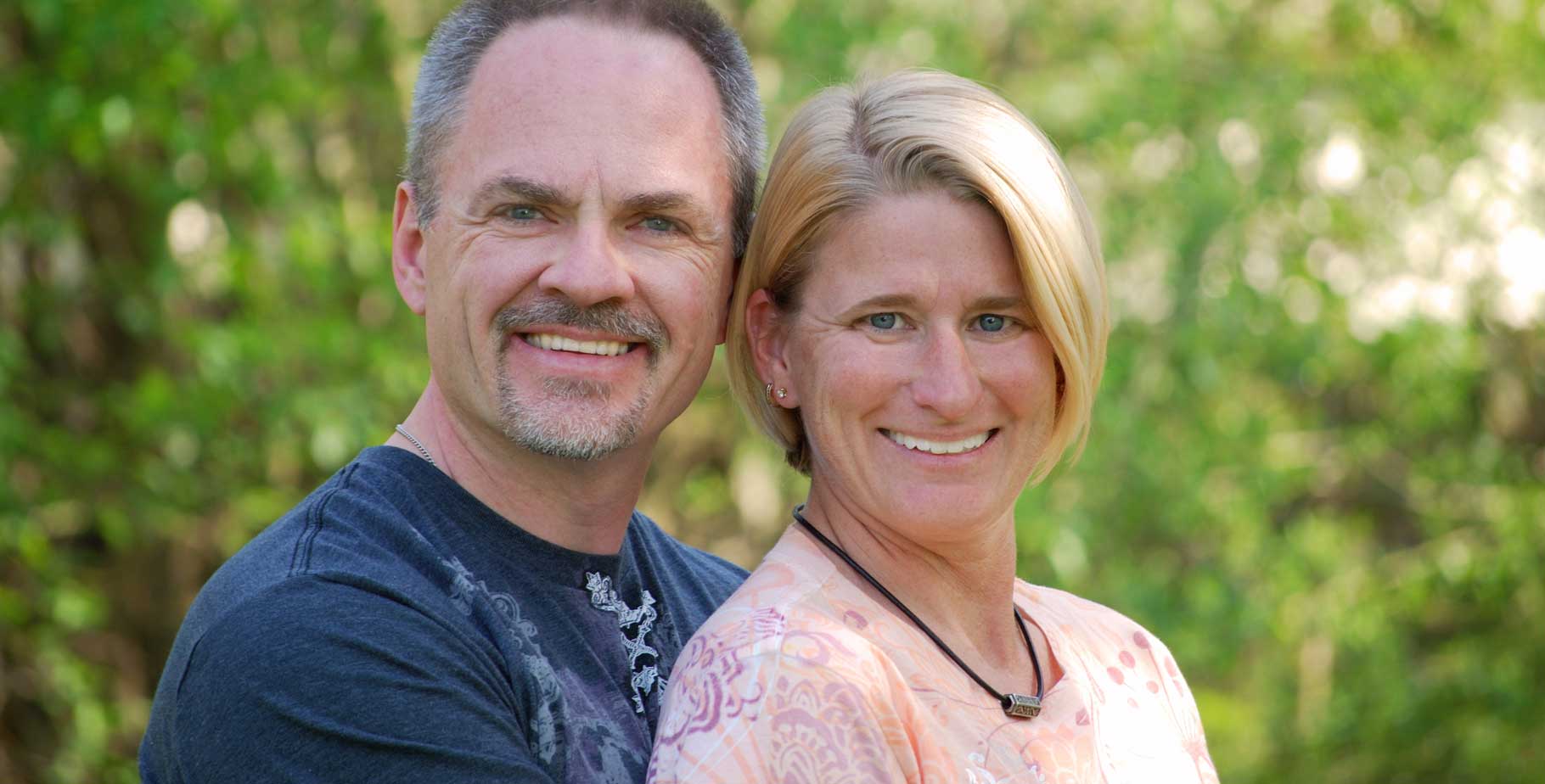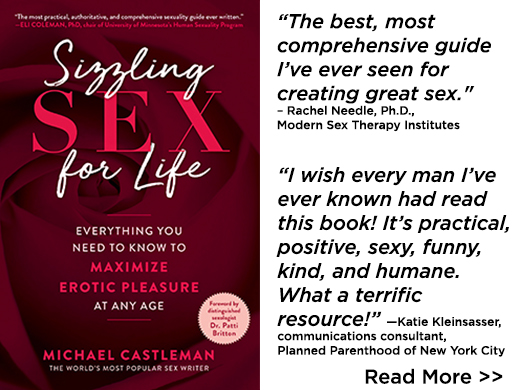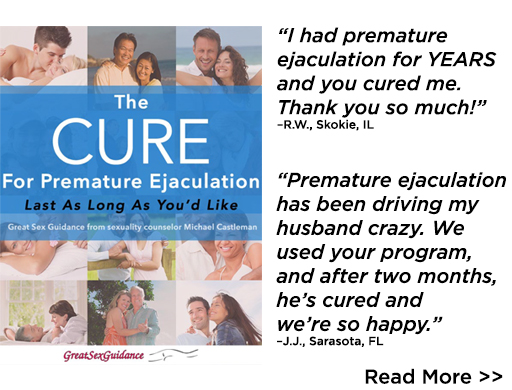
The sex-addiction industry says the affliction causes great harm. Does it? Part 1 of this series shows that “sex addiction” does not meet standard criteria for real addictions. Proponents of sex-addiction understand this, but don’t want to drop the term “addiction.” It’s frightening, which helps market their treatment programs. So they’ve redefined “addiction.”
The field’s founder, Patrick Carnes, uses the acronym SAFE to identify what he calls the four signs of “addictive” sexuality:
- Secret.
- Abusive, i.e. causing harm.
- Feelings, i.e. used to avoid pain.
- Empty, i.e., outside a committed relationship.
Like the addiction concept, the SAFE formula is also riddled with misconceptions.
- Secret. There’s a big difference between secret and private. People have a right to privacy. It’s socially unacceptable—and illegal—to masturbate in public. So people scratch that itch it in private. Unless it substantially interferes with life responsibilities, what’s wrong with a little privacy?
Meanwhile, some people do, indeed, keep their sexuality secret. Many lesbian/gay folks are out with friends but not with families or coworkers for fear of ostracism. Their secrecy is not pathological. It’s a reasonable way to cope with discrimination.
- Abusive. In Don’t Call It Love, Carnes writes:
Sadomasochism (S&M) is an addictive behavior that associates pain with sexual pleasure. Even when both partners consent, there is a blatant power imbalance between giver and recipient. In relationships based on hurting another, there can be no genuine trust or intimacy.
Carnes completely misunderstands BDSM. Actually, no one gets abused. Players agree in advance on subs’ limits, and doms respect them. The irony of BDSM is that subs control the play, and can invoke safe words at any time to stop the play. BDSM aficionados insist that no other human interactions are as trusting or intimate. The estimated 5 million American BDSM players and tens of millions of BDSM fantasizers are not “addicts.” They’re as mentally healthy as the general population (see A Loving Introduction to BDSM).
- Feelings. Life involves suffering. Both solo and partner sex are soothing. What’s wrong with using sex to assuage physical or emotional pain? It’s much healthier than taking drugs, many of which are indisputably addictive.
- Empty. Lovemaking in committed relationships can be great, but not always. For some committed partners, sex feels unsatisfying. Meanwhile, most adult Americans have had casual sex. For the substantial majority, it’s fun and life-affirming, not empty or “addictive.”
“Excessive”?
An old joke asks: “What’s a pervert?” Someone who does it more often and in more ways than you. Substitute “sex addict” for “pervert,” and the punch line still applies.
The sex-addiction industry claims the affliction involves “excessive” sexual thoughts and/or actions that distress victims or their loved ones, including erotic fantasies, masturbation, watching porn, sexting, phone sex, and visits to strip clubs, sex workers, and/or sex clubs.
But what’s “excessive”? Who knows? The only accurate generalization about sex is that everyone is unique. For there to be “excessive” sexuality, there must be a “normal” frequency that “addicts” grossly exceed. But there is no normal sexual frequency, either solo or partnered. The best evidence shows an enormous range of making whoopie, from asexuality to more than once a day. If there’s no consensus about what’s normal, how can anything be excessive?
The sex-addiction industry postulates that “excessive” sex involves seven or more orgasms a week. They arrived at this figure by surveying Americans’ sexual frequency and arbitrarily labeling the most active 5 percent as “addicted.”
Really? Consider popcorn. People eat varying amounts, from none to buckets a day. Do the most popcorn-loving 5 percent have a mental disorder?
Consider couples newly fallen in love. They often burn up the sheets for months on end, sometimes years. Are they “sex addicts?”
Consider dancing. Pretty much everyone enjoys it. Many take dance classes for fun and fitness. And some become professionals and dance hours a day for years. Professional dancers often face extended absences from loved ones and suffer debilitating injuries. Do they have “compulsive hyper-dancing disorder?”
Now consider porn. The sex-addiction industry contends that porn grabs men by the nuts and won’t let go. But statistics from PornHub, the world’s largest porn site, show that 86 percent of visits last less than 20 minutes. The vast majority of men use porn for quick little breaks. They don’t get trapped in it.
Canadian researchers surveyed the personalities, libidos, and sexual compulsivity of 7,938 women and 6,458 men, age 18 to 94. Some had sought treatment for “sex addiction.” One-third (men, 44 percent, women, 22 percent) scored in the range the addiction industry calls “hypersexual.” But the researchers found only one real difference between the “addicted” third and the other two-thirds—libido. The “hypersexuals” simply enjoyed sex more.
There is no “normal” sexual frequency or repertoire, so we must be very cautious calling anyone’s solo or partner play excessive or compulsive.
Divorce?
The sex-addiction industry claims that compulsive sex, particularly porn, causes many divorces. Not so.
According to the Centers for Disease Control and Prevention, the U.S. divorce rate peaked in 1980. Since then, it has steadily fallen. The Internet porn explosion since the late 1990s has neither slowed nor reversed the nation’s steadily declining divorce rate. By 2010, the divorce rate had dropped considerably.
Porn undoubtedly contributes to some divorces, but with the divorce rate decreased while Internet porn use has increased, we clearly have no porn-fueled divorce crisis.
Close relationships?
Some research shows that frequent porn use interferes with close personal ties. But most studies find no evidence that porn destroys closeness. If porn causes significant social isolation, men would have to spend hours a day viewing it. Very few do (above).
English investigators surveyed the social ties of 164 men and their porn habits. “There were no differences based on self-reported porn use.” In fact, the men who viewed the most porn reported the closest social ties. The researchers concluded that regular porn viewing suggests “craving for intimacy,” not any escape from it.
Everyday responsibilities?
The sex-addiction industry contends that problematic sex interferes with important commitments. I’ll grant that getting fired for watching porn at work is problematic. It’s also rare. Many people’s work schedules and commutes interfere with family responsibilities. Are they mentally ill? We applaud top athletes for their constant training, but their regimens typically require sacrificing other obligations. Are they “addicts?”
Sexual irresponsibility?
Proponents of sex addiction contend that porn spurs risky sex. Some research supports this. An Australian review of 17 studies shows that as porn viewing increased, the men expressed less inclination toward safe sex.
But what men say is much less important than what they do. Since the Internet porn explosion, the teen pregnancy rate has declined 60 percent, and the abortion rate has fallen 48 percent to its lowest level since 1973. Men may say porn frays their commitment to safe sex, but they’ve actually become more sexually responsible—in part because women have become more assertive: Want nookie? Here’s a condom. No compelling evidence shows that porn torpedoes safe sex. Quite the contrary.
Some research shows that as porn consumption increases, men admit more affairs and visits to sex workers. However, this is an association, not proof of cause and effect. It’s possible that porn viewing causes affairs and whoring. But it’s equally possible that the finding reflects individual libido differences. As men’s sexual desire increases, so does their porn use and their willingness to step out. The association might also be explained by differences in sexual frankness. Men who feel more comfortable admitting porn viewing may also feel more willing to admit nonmonogamy. No persuasive evidence shows that that porn causes risky sex.
Libido and arousal?
The sex-addiction industry argues that men who stroke to porn have “difficulty becoming sexually aroused with partners.” Another myth. UCLA researchers surveyed the porn habits of 280 men. As their viewing increased, so did their desire for real sex—both solo and partnered. Far from destroying libido, in this report, porn spurred it.
Next, the researchers showed the men porn and asked how turned on they felt. The more porn they reported viewing outside the study, the more arousing they found the experimental video. Far from short-circuiting men’s arousal, porn appears to enhance it.
Anxiety? Depression? Substance Abuse?
Several studies show that sex labeled “addictive” is associated with mood disorders and substance abuse. Again, this association may not mean cause and effect.
Consider homosexuality. Dozens of 20th-century studies showed a consistent link between being lesbian/gay/bi/trans and drug abuse and psychiatric disorders. Gay bashers insisted that homosexuality caused these problems. They developed treatment programs to return the LGBT population to the one true path, monogamous heterosexuality.
But other studies showed that most LGBT mental disorders were caused not by their sexuality, per se, but rather by the guilt and shame they experienced from being socially stigmatized. Relentless discrimination drives people crazy.
Now that most Americans view being LGBT as a variation on normal, the LBGT population’s mental health looks much more like that of heterosexual Americans.
In 2001, U.S. Surgeon General David Satcher declared, “There is no valid scientific evidence that sexual orientation can be changed.” Since then, most states have outlawed so-called “conversion therapy” as nonsense.
The situation with purported “sex addiction” is similar. The real issue is rarely sex, but usually the guilt and shame people feel about their sexuality.
Brain Changes Identical to Drug Addicts?
Promoters of sex addiction insist that addicts experience brain changes identical to those of drug addicts, notably, spikes in levels of the neurotransmitter dopamine. Drug addicts experience dopamine surges. So do “sex addicts.”
So what? During sexual arousal, everyone experiences dopamine surges. Dopamine is the neurotransmitter of pleasure. For the large majority of people, sex is pleasurable. When erotically engaged, of course, their dopamine levels rise.
Every pleasure temporarily boosts dopamine, including erotic novelty and sexual fantasies. This is totally normal. It’s the reason why novelty and fantasies enhance lovemaking.
UCLA researchers performed brain scans on 122 people, some of whom had been diagnosed as “sex addicted.” Their brain physiology looked nothing like that of substance abusers.
Proponents of sex addiction claim that as men descend into it, addiction-related brain changes cause erectile dysfunction. German investigators performed PET scans on men with normal erection function and on a dozen ED sufferers who viewed lots of porn. Their brains showed no differences.
University of New Mexico scientists explored the brain function of fifty-two adults self-identified as “sex addicts.” Their brain function was normal, nothing like that of drug addicts. The only real difference between them and the general population was greater libido.
In drug addicts, self-control mechanisms break down. Brigham Young University researchers compared the self-control of 30 men who’d sought treatment for “sex addiction” and 30 who did not. The two groups showed no differences in self-control.
Finally, University of Minnesota investigators explored the brain function of 16 men, eight diagnosed as “sex addicts.” There were no differences, not even in areas involved in compulsivity. The only distinction? The “sex addicts” scored much higher in anxiety. This corroborates the observation that “sex addiction” is not about sex, but about the anxiety it causes.
The sex-addiction itemizes the many ways the supposed affliction causes harm. But the best research supports none of them.
———–
Part 1 of this series explores whether sexual habits including frequent porn watching constitute actual addictions. Part 3 discusses the true prevalence of out-of-control sex, and how to change it without mislabeling the anyone “addicted.”
References:
The formula for problematic sex: S-A-F-E
Carnes, P. Don’t Call It Love: Recovery from Sexual Addiction. Bantam, NY, 1992.
Elements of sex addiction
Kafka M.P. “Hypersexual Disorder: A Proposed Diagnosis for DSM-V,” Archives of Sexual Behavior (2010) 39:377.
Kafka, M. P. “Hypersexual Desire in Males: An Operational
Definition and Clinical Implications for Males with Paraphilias and
Paraphilia-Related Disorders,” Archives of Sexual Behavior (1997) 26:505–526.
How much is too much?
Langstrom, N. and R.K. Hanson. “High Rates of Sexual Behavior in the General Population: Correlates and Predictors,” Archives of Sexual Behavior (2006) 35:37.
Winters, J. et al. “Dysregulated Sexuality and High Sexual Desire: Distinct Constructs?” Archives of Sexual Behavior (2010) 39:1029.
Porn’s impact on marriages and divorce risk
Bergner, R.M and A. Bridges. “The Significance of Heavy Pornography Involvement for Romantic Partners: Research and Clinical Implications,” Journal of Sex and Marital Therapy (2002) 28:193.
Bridges, A.J. et al. “Romantic Partners’ Use of Pornography: Its Significance for Women,” Journal of Sex and Marital Therapy (2003) 29:1.
Maltz, W. and L. The Porn Trap. HarperCollins, NY, 2008, p. 2.
Perry, S.L. and C. Schliefer. “ Till Porn Do Us Part? A Longitudinal Examination of Pornography Use and Divorce,” Journal of Sex Research (2018) 55:284.
Perry, S.L. “Pornography Use and Marital Separation: Evidence from Two-Wave Panel Data,” Archives of Sexual Behavior (2017)
https://doi.org/10.1007/s10508-017-1080-8.
The divorce rate has fallen
Porn and interpersonal closeness
Butler, M.H. et al. “Pornography Use and Loneliness: A Bidirctional Recursive Model and Pilot Investigation,” Journal of Sex and Marital Therapy (2018) 44:127.
Poipovic, M. “Pornography Use and Closeness with Others in Men,” Archives of Sexual Behavior (2011) 40:449.
Staley, C. and N. Prause. “Erotica Viewing Effects on Intimate Relationships and Self-Partner Evaluations,” Archives of Sexual Behavior (2013) 42:615.
Porn and risky sex
The Porn Trap, p. 81.
Harkness, E.L.et al. “Association Between Pornography Use and Sexual Risk Behaviors in Adult Consumers: A Systematic Review,” Cyberpsychology, Behavior, and Social Networking (2015) 18:59.
Wright, P.J. “U.S. Males and Pornography, 1973-2010: Consumption, Predictors, Correlates,” Journal of Sex Research (2013) 50:60.
The abortion rate has fallen to a record low
Porn and arousability.
The Porn Trap, p. 81.
Prause, N. and J. Pfaus. “Viewing Sexual Stimuli Associated with Greater Sexual Responsiveness, Not Erectile Dysfunction,” Sexual Medicine (2015) 3:90.
Compulsive sexuality linked to anxiety, depression, etc.
Black, D.W. et al. “Characteristics of 36 Subjects Reporting Compulsive Sexual Behavior,” American Journal of Psychiatry (1997) 154:243.
Odlaug, B.L. “Compulsive Sexual Behavior in Young Adults,” Annals of Clinical Psychiatry (2013) 25:193.
Raymond, N.C. et al. “Psychiatric Comorbidity and Compulsive/Impulsive Traits in Compulsive Sexual Behavior,” Comprehensive Psychiatry (2003) 44:370.
Sex for stress release
Carroll K. et al. “Differences Between Males and Females in Motives for Engaging in Sexual Intercourse,” Archives of Sexual Behavior (1985) 14:131.
The Surgeon General’s report denouncing efforts to convert the LGBT population to heterosexuality
The Surgeon General’s Call to Action to Promote Sexual Health and Responsible Sexual Behavior, U. S. Department of Health and Human Services, 2001.
Dopamine surges in the brains of both drug addicts and alleged sex addicts
Park, B.Y. et al. “Is Internet Pornography Causing Sexual Dysfunctions? A Review with Clinical Reports,” Behavioral Sciences (2016) 6:17.
The brain of alleged sex addicts differ from those of drug addicts
Prause, N. et al. “Modulation of Late Positive Potentials By Sexual Images in Problem Users and Controls Inconsistent with ‘Porn Addiction,’” Biological Psychology (2015) 109:192.
Miner, M. et al. “Preliminary Investigation of the Impulsive and Neuroanatomical Characteristics of Compulsive Sexual Behavior,” Psychiatry Research (2009) 174:146.





